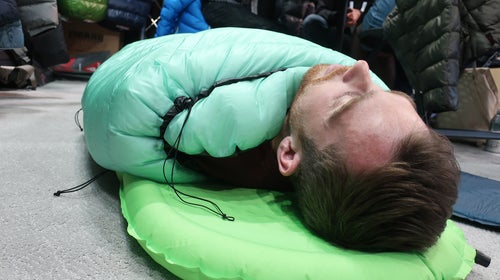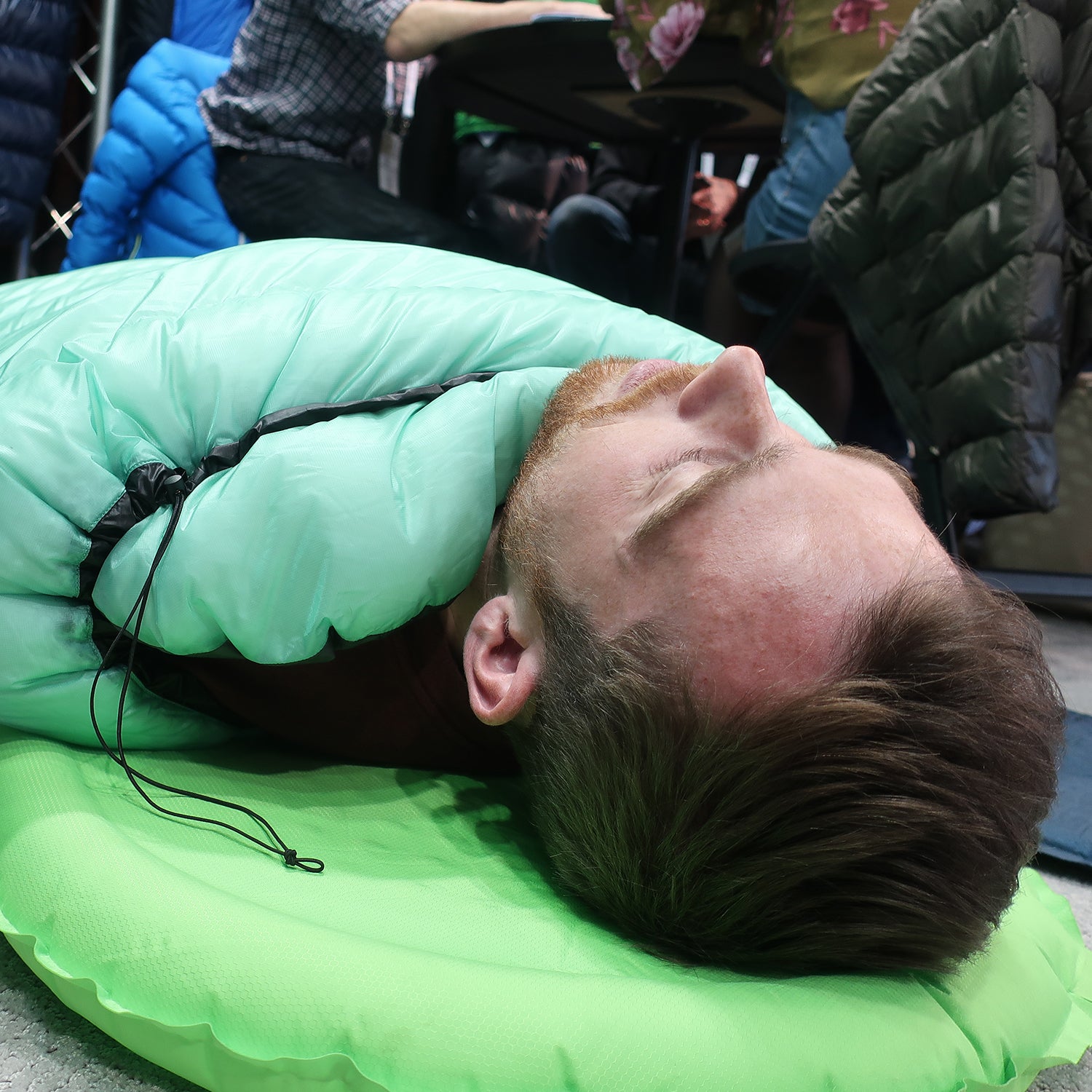During one week in April, three separate people asked me about the quilt, which I’ve used for about 30 nights—while scouting the Yosemite High Route in August 2018, on guiding trips in Sequoia and Kings Canyon National Parks a month later, and while enduring cold and wet conditions in West Virginia in May 2019.
I can’t recall another quilt that has garnered such interest, and I attribute that entirely to the manufacturer. Western Mountaineering has been making premium down sleeping bags and insulated clothing since the early 1970s in San Jose, California. And it’s still owned by Gary Schaezlein, who cofounded the brand with Jeff Jones.
The AstraLite is the first sleeping quilt from Western Mountaineering. It weighs a sweet 16 ounces and is appropriately rated to 26 degrees Farenheit, making it perhaps the warmest-per-weight quilt on the market. It’d be ideal for the Mountain West from about May through mid-October and the desert Southwest in the spring, fall, and most of the winter. I would not recommend it for humid or rainy climates. If you backpack primarily east of the 100th meridian or west of the Cascades, look elsewhere.
As a top quilt, the AstraLite performs wonderfully in a hammock or on the ground. (If you’re a calm sleeper, utilize its pad-attachment system and/or use it inside of a bivy sack.)
The AstraLite is a premium-grade product: made in the USA, with 850-fill humane European goose down, 4.5 inches of loft, seven- and ten-denier shell and liner fabrics, respectively, and an insulated neck yoke, plus top-notch craftsmanship and customer service.
But you’ll pay for it. At $420, the AstraLite is more expensive than the best offerings from direct-to-consumer brands like Enlightened Equipment, Katabatic, Nunatak, and ZPacks.
AstraLite Versus NanoLite
The AstraLite was launched simultaneously with , which is lighter (11 ounces) but less warm (rated to 38 degrees). If I were to review the NanoLite specifically, my comments would be mostly the same.
The AstraLite and NanoLite are identical in every way besides loft (which is a function of their respective fill weights and baffle heights). They share the same down quality, shell and liner fabrics, baffle construction, pad-attachment system, dimensions, and neck yoke.
If I backpacked primarily in the warmer desert Southwest, I’d probably get more use out of a NanoLite, because its comfort range overlaps more with the prime backpacking months. But in the Mountain West, it’d be suitable only for the warmest summer nights or for warm sleepers.
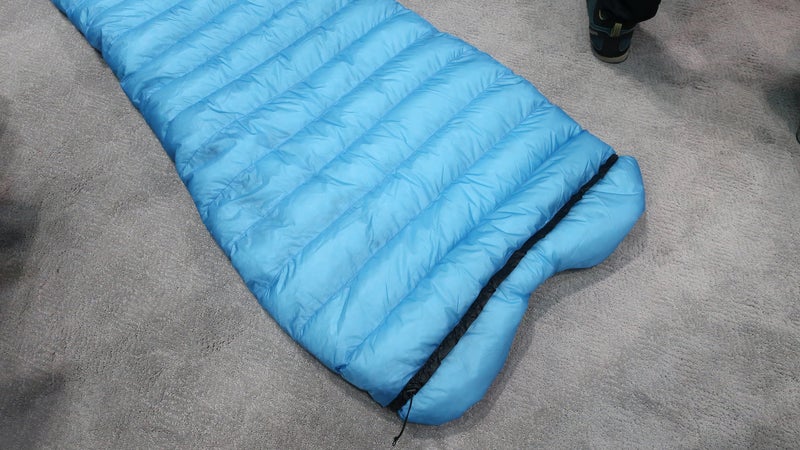
Warmth
In the summer, I get , and I usually cowboy camp, making me more vulnerable to radiant heat loss and nighttime katabatic winds. To push a sleeping bag or quilt to its advertised comfort-temperature rating, I expect to sleep in most of my clothing (a hiking shirt, shorts and underwear, trekking pants, a fleece midlayer, and a hooded down jacket).
When I used the AstraLite, nighttime temperatures in Yosemite that August were in the low-to-mid-thirties; in Sequoia-Kings in September, they were in the mid-to-high twenties; and in West Virginia in May, they were in the low forties (and it was wet). I was comfortable on all trips and concluded that the AstraLite’s 26-degree rating was fair and appropriate.
To remain comfortable on the September trips, when the lows were regularly at the AstraLite’s comfort limit, I swapped the Big Agnes Insulated AXL () for a warmer , and more often I used the AstraLite’s draft-closure system (see below).
I see little sense in a quilt that is rated for temperatures colder than the high twenties. Beyond this threshold, high-loft head insulation is absolutely mandatory, and at that point, you might as well use a traditional mummy bag, which is simpler and less vulnerable to drafts.
Sizing
The AstraLite and NanoLite are both available in two lengths:
- A five-foot-eight-inch version, for sleepers less than six feet tall
- A six-foot-four-inch version, for sleepers between six feet and six feet six inches
With quilts, it can be difficult to make sense of the width spec, which Western lists as “up to 68 inches.” More helpfully, the AstraLite and NanoLite are based on Western’s UltraLite mummy bag, which has a slimmer profile of 59, 51, and 39 inches at the shoulder, hip, and foot, respectively.
Insulated Draft Yoke
The chief downside of sleeping quilts is their draftiness. Active sleepers have an especially tough time, constantly revealing their noninsulated backsides or breaking the seal between the quilt edges and the pad. But even calm sleepers like me lose heat around the shoulders and neck.
The AstraLite reduces drafts with a comfortable neck yoke. To employ, snap the two top corners together, and tighten the cinch cord that runs through the quilt’s top hemline.
The yoke makes a significant difference in nighttime comfort, especially when temperatures are approaching the quilt’s comfort limit. But it still does not rival the cocoon sensation of a mummy bag or the warmth of the hideaway hood on the (notably heavier) Sierra Designs Nitro quilt.
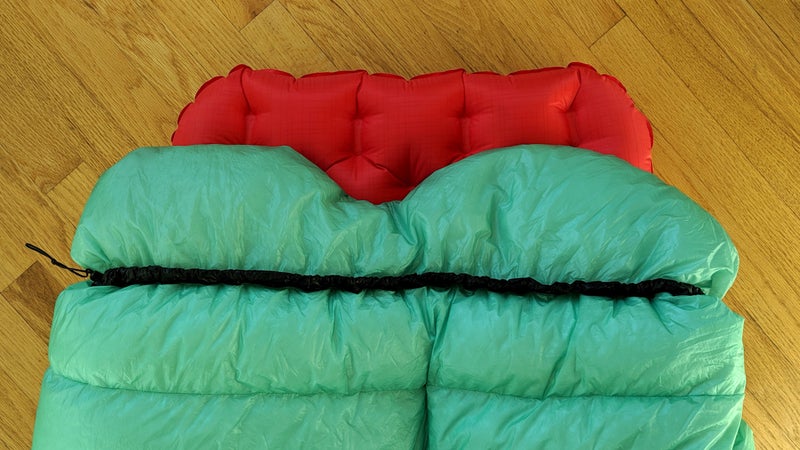
Pad-Attachment System
The AstraLite has three 3/8-inch elasticized webbing loops on its underside, through which a sleeping pad can be inserted. This creates a seal between the edges of the quilt and the sleeping pad, making the quilt function more as a true top bag.
The loops are simple and effective, but they are a little fussy. I found it best to slide a partially inflated pad through the loops, adjust as necessary, and then fully inflate the pad.
I removed the uppermost loop, which is a few inches below the top hemline. When this loop is engaged, it feels as if you’re attached to a backboard, which defeats a primary selling point of quilts: their free-form nature.
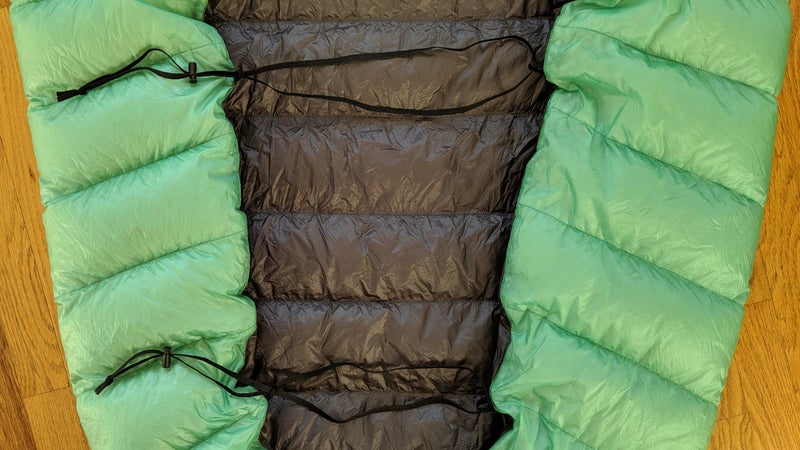
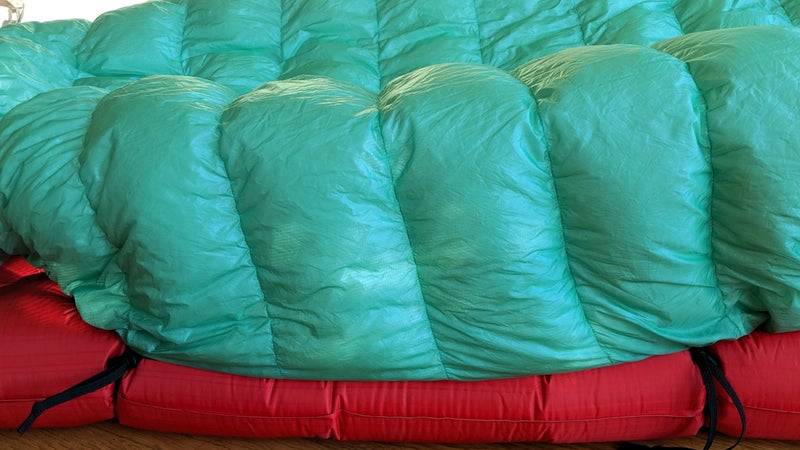
Moisture Resistance
Based on its performance in the High Sierra last year, I was inclined to give the AstraLite a hearty thumbs-up. It offers a lot of warmth for just 16 ounces. But after using it for two three-day cold and wet trips in West Virginia, my endorsement is now qualified.
I don’t know the exact cause, but the AstraLite (and presumably the NanoLite, too) floundered in consistently wet conditions. My quilt never came into direct contact with moisture (e.g., splatter, a dunking), but it was wetter than other bags: clients observed this during a midday “,” and it was very evident to me after the trips when I was drying my quilt.
As a result of it absorbing ambient humidity, the AstraLite was far less warm, performing more like the NanoLite than a dry AstraLite. This issue presented itself slightly on my earlier trips, but in the semiarid Mountain West, it was much less noticeable.
The list of potential explanations is short. Either the down (which is not treated to be more water-resistant) has poor resistance to moisture, or the fabric breathability is low. Either way, this is a lovely product for semiarid and arid climates but not a great option for humid ones.

Competition
Sleeping quilts cannot be EN/ISO tested (the independent test that mummy bags undergo to get their temperature rating). And without this apples-to-apples rating, when purchasing a quilt, we’re unable to definitively answer the fundamental question: What is the most thermally efficient bag with my required price point, dimensions, materials, construction, and company values?
Product specs can shed some insight, but that requires (e.g., loft, fill weight, length, and width), none of which are independently verified and/or held to an industry standard.
The good news is that buyers have more choices—in both the number of brands and the number of excellent products—than ever before. If you do a little bit of homework, such as online reviews and ideally an in-person inspection, you’re almost guaranteed to be happy with your purchase.
